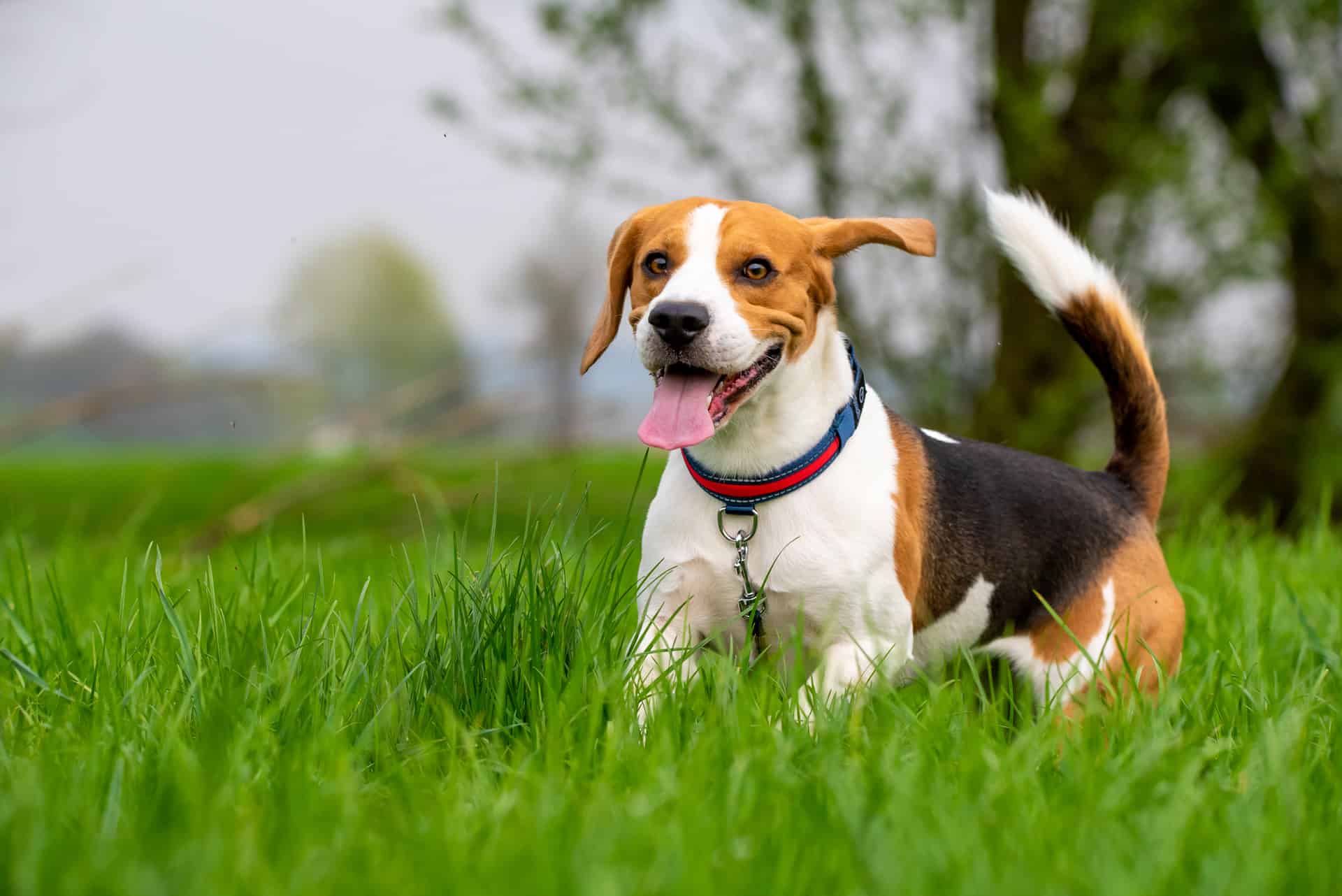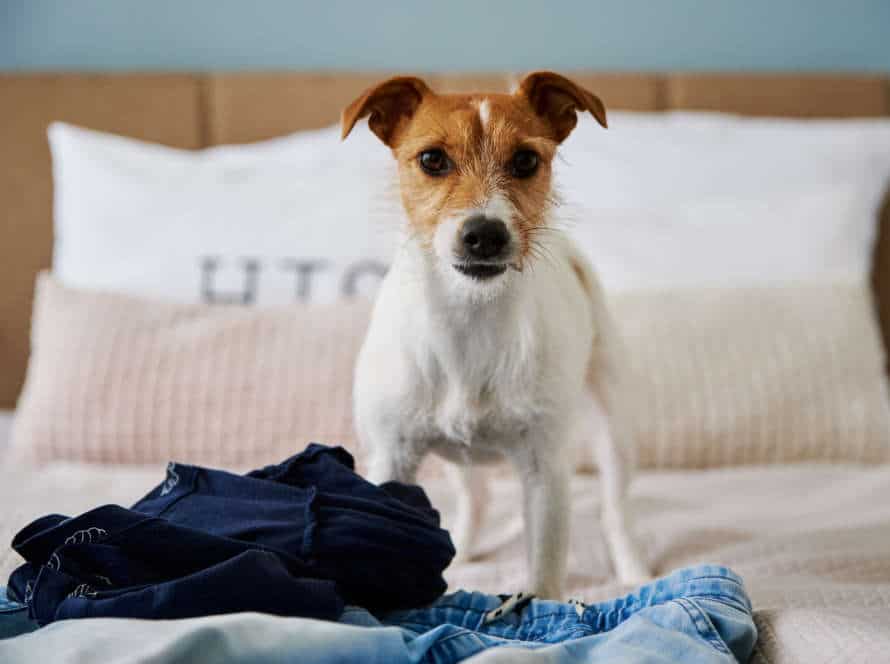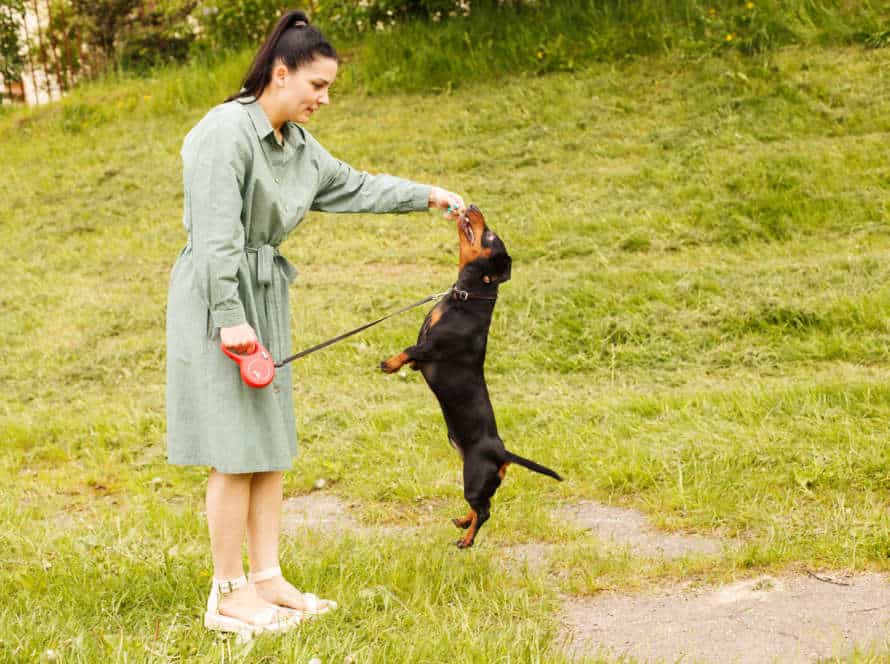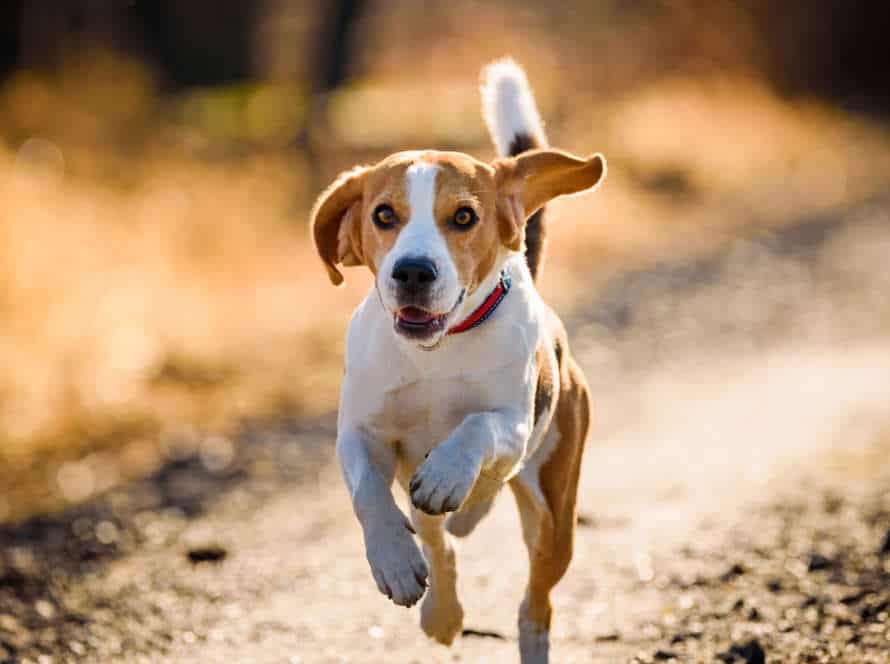How Excitement and Overstimulation Contribute to Jumping
Excitement and overstimulation can make dogs jump. This is how they try to release their pent-up energy. However, it can result in undesirable behaviors like biting or destructive chewing.
To prevent jumping, train your dog to remain calm in high-stress situations. Use positive reinforcement and reward good behavior. Ignore bad behavior. Exercise and play sessions help to release excess energy and reduce the risk of excitement-induced jumping.
The Science of Excitement and Overstimulation
Ever seen a horse that jumps in joy? Horses can get too excited by activities. Without proper training, it can cause naughty behavior, like jumping. Let’s find out the science behind it. What is the reason for excitement and overstimulation that make them jump? Let’s explore!
The Physiological Reaction of the Brain to Excitement and Overstimulation
The brain experiences excitement when it is overstimulated. This causes a “fight or flight” response, which increases the heart rate, speeds up breathing, and tightens muscles. The body’s senses become heightened, making it alert to its environment.
On the other hand, overstimulation can lead to exhaustion, irritability, and difficulty concentrating. It could be caused by loud noise, bright lights, or multiple sources of information.
So, balance excitement with rest and relaxation. This helps maintain mental health and reduce burnout.
Pro Tip: Exercise and mindfulness practices regulate the nervous system and reduce stress.
Hormones involved in Excitement and Overstimulation
Two hormones that can cause excitement and overstimulation are adrenaline and cortisol. Adrenaline is released when we sense a threat or experience excitement. Cortisol levels go up when we are stressed, anxious, or exposed to stimulants for too long.
Excess amounts of these hormones can lead to overstimulation, which may include jumping. People may feel joy or be very irritable and anxious. It’s important to know how to manage this kind of excitement.
We can use deep breathing, physical exercise, and meditation to control the levels of adrenaline and cortisol in our body. Practicing mindfulness can help us become more aware of our body’s signals and better manage our emotions. Pro Tip: Be mindful!
How Jumping is a Reaction to Excitement and Overstimulation
Jumping is a reaction to excitement or overstimulation in both humans and animals. Our bodies release adrenaline and other stress hormones when we feel excited or overstimulated. This can lead us to jump, pace and fidget.
Dopamine and other pleasure-inducing chemicals surge in our brains during overstimulation and excitement. This can make us eager to move and jump around.
It’s important to understand the science behind these experiences. We can then better manage them and channel our energy into productive activities.
Pro tip: The next time you feel the urge to jump, take deep breaths and focus your energy on something enjoyable, like dancing or sports.
Jumping in Different Situations
Dogs jump for lots of reasons. It can depend on the situation. Some dogs jump out of joy, while others jump because they are too excited. Knowing the difference between these two things can help you handle your dog’s jumping.
Let’s explore the kinds of jumping and how they affect your pup.
Excitement and Jumping in Dogs
Jumping is a common behavior in dogs. It can be due to excitement and overstimulation. Examples of such situations include:
- Greetings: Dogs may jump on their owners and visitors if they’re thrilled to see them after a long time. To stop this from being a habit, train your pup to sit and stay when you meet people.
- Playtime: When playing, dogs might get over-excited and start jumping. Take breaks when you see this and direct their energy towards something else.
- Training: During training, dogs may jump up to lick your face or get treats. Set limits and stop this behavior with the right commands.
- Car rides: Dogs can become very excited in cars and start jumping around. Use restraints to calm them down.
To reduce jumping, it is important to understand why your dog does it. Pro tip: Exercise and mental activities can help to stop overstimulation and jumping.
Positive Reinforcement to Stop Jumping in Dogs
Jumping can be a problem for some pups. Positive reinforcement is the way to go, not punishment. Here’s how:
- Give treats as a reward when they sit instead of jump. Make sure they’re small and easy to eat fast.
- Praise them with a happy voice, patting or scratching behind the ears when they obey.
- Do this consistently so that your pooch knows good behavior brings rewards. Never punish them, as it will make matters worse.
Positive reinforcement can help train your dog to stop jumping and to respond to you obediently.
How to Train Your Puppy not to Jump
Puppies typically jump when they’re overly excited or stimulated. Training them not to jump can help maintain a good and healthy relationship between you and your pup. Here’s how:
- Be consistent. Everyone in your family should follow the no-jumping rule. Otherwise, your pup may get confused.
- Redirect. When your pup jumps, give it something else to focus on. A toy or chew could do the trick.
- Use positive reinforcement. Reward your pup with treats and praise when it follows your commands.
- Address overstimulation. Gradually introduce a stimulating environment, and teach your pup to respond without jumping.
With consistent training and rewards, your pup will learn good behavior brings positive attention, treats, and toys.
Overstimulation and Jumping in Toddlers
Jumping is a natural activity for toddlers. It helps develop their gross motor skills and lets out energy. But, it can also be a response to being over-excited. Here are three situations where it might happen:
- In busy places like parks, parties, or malls.
- When playing with other kids, especially competitive or high-energy games.
- When they watch TV or use screens with bright colors, loud sounds, or fast-moving images.
It’s important to supervise them during these times. Redirecting their energy to other activities like running or playing is better and safer.
Pro Tip: Give them a safe area to jump in to avoid any injury.
Techniques to Calm Overstimulated Toddlers
Jumping is a typical activity amongst toddlers which is usually harmless. However, in some cases, it can be an indication of excitement or too much stimulation. Here are some tips to calm overstimulated toddlers when they are jumping in different situations:
- Provide a tranquil and secure area. When toddlers get too stimulated, it is important to give them a peaceful and quiet area. Take them to a silent space away from the source of overstimulation, such as a loud event or crowded region.
- Use calming deep pressure. Put gentle pressure on their back or arms or give them a hug to provide calming deep pressure on their body. This can make them feel more grounded and relaxed.
- Offer sensory toys. Sensory toys like playdough, water beads, or kinetic sand can help appease overstimulated toddlers by engaging their senses.
- Teach breathing exercises. Show your toddler simple breathing exercises, like taking deep breaths and slowly exhaling, to help them soothe and calm down.
- Redirect their energy. Motivate your toddler to take part in physical activities, like gentle yoga or dancing, which can redirect their energy and help them relax.
Remember that each child is different, and a method that works for one may not work for another. Be patient and try different techniques until you find what works best for your child.
Pro tip: Creating a tranquil and predictable routine for your child can also help prevent overstimulation and lessen jumping behaviors.
How to Redirect Jumping Behavior in Toddlers
Jumping is a common action for toddlers. However, it can be troublesome and even dangerous in some cases. Redirecting this behavior is an excellent way to help your toddler direct their energy in a positive way. Here are a few ideas:
- Do physical activities that involve jumping, like jumping jacks or bouncing on a mini-trampoline.
- Play games that need your toddler to jump, like “Jump over the Pillow” or “Hopscotch“.
- Create a special jumping space at home or in the backyard, such as a mat, trampoline, or pool.
- When your toddler starts jumping in unsuitable situations, such as public areas or furniture, divert their attention away.
- Explain why jumping is not allowed in some places and set clear regulations for their behavior.
Pro tip: Redirecting your toddler’s jumping behavior can be amusing and enjoyable while supporting their physical and mental development. It can also help them learn control and better their impulse management skills.
Overstimulation and Jumping in Children with Autism
Jumping is a regular activity for children with autism, especially when they are overstimulated. Environments or situations which cause overstimulation can make children with autism become overwhelmed and act without thinking.
Common situations where excitement and overstimulation result in jumping include:
- Noisy and populated places like parties, festivals or malls.
- Thrilling activities like playing on trampolines or diving into a ball pit.
- Annoying situations, like not being able to communicate clearly or not understanding social cues.
It’s important to have a protected area for children with autism to jump and release their energy. Some ideas to do this include offering a jumping mat, a trampoline or soft play area, and doing sensory-friendly activities on a daily basis.
Pro tip: Sensory-friendly activities such as yoga, deep breathing exercises and massages can help children with autism control their senses and reduce the need to jump.
Sensory Trigger Identification to Reduce Jumping
Jumping in different scenarios can indicate excitement and overstimulation in pooches. Identifying what triggers this can help reduce jumping.
These triggers can be sights, sounds, smells, or activities that get your pup overly excited and cause them to jump. Common triggers are doorbells, guests, and food prep.
By figuring out your pup’s triggers, you can dodge or manage them to help lessen the jumping. To do this, observe your pup in different circumstances, such as when eating, playing, or socializing. Notice what makes them jump and write it down. Try to avoid or manage these triggers while training, so your pup can learn to stay calm and not jump. Teaching them an alternate, desirable action, like sitting, can also help.
Using Applied Behavioral Analysis to Address Jumping
Jumping is a common behavior in dogs. It can be disruptive and even dangerous. To address jumping, Applied Behavioral Analysis (ABA) is helpful. Excitement and overstimulation often cause jumping.
ABA involves breaking the behavior down into smaller parts. It also requires observing triggers that cause the behavior and changing these triggers. In the case of jumping, removing excitement and overstimulation can help.
For example, if a dog jumps when visitors arrive, teach them to stay or sit. This can help reduce the excitement and overstimulation and discourage the behavior.
ABA is successful in addressing jumping. But, patience, consistency, and time are needed to see results. Remember: Reward good behavior and never use punishment or force to deter bad behavior.
Steps to Take to Reduce Jumping
People often see that their dog is too excited and jumps a lot. This can be a problem when they meet other dogs or people outside their family, or even at home. To stop jumping, it’s important to understand how excitement and being over-stimulated can lead to it. So let’s find out more!
Identify the Cause of Excitement or Overstimulation
Jumping is a common behavior seen in overexcited or overstimulated dogs. To reduce jumping, first identify the cause. Here are some steps:
- Observe your pup’s body language – look for things like panting, tail wagging, and raised hackles.
- Identify the trigger – could be visitors, noise, or environment.
- Use positive reinforcement – teach pup alternative behaviors like sitting or lying down.
- Practice consistency – everyone in the house should use same methods to avoid confusion and reinforce good behavior.
Pro tip – keep sessions short and fun. Too much training may overstimulate your pup. Give them breaks and keep it low-key.
Increase Exercise to Manage Excitability in Dogs
Managing excitability in dogs? Exercise is the answer! When dogs have too much energy, they may jump or act out. Here’s how to reduce jumping:
- Gradually increase physical activity. It helps burn off extra energy and reduces the tendency to jump.
- Give them mentally stimulating activities, like puzzles or interactive games.
- Train their obedience regularly – this reinforces good behavior and discourages jumping.
Remember, excitement and overstimulation can lead to jumping. Managing energy and providing stimulating activities can help reduce jumping and promote positive behavior in our furry friends.
Reduce Screen Time to Decrease Overstimulation in Children
Reducing screen time is a powerful way to decrease overstimulation in kids. Result? Reduced jumping or hyperactivity. Here’s how:
- Set a limit. Decide a sensible amount of screen time (TV, tablet, video game, or phone) for your child and stick to it.
- Suggest other activities. Offer up activities that engage your child and don’t include screens, like art, puzzles, reading or outdoor physical activities.
- Set an example. Show your child that reducing screen time is beneficial by setting an example.
- Monitor use. Monitor their screen time, based on their age, to make sure they keep to the limit.
- Gradual reduction. Lower screen time gradually over a few weeks. Going cold turkey might cause frustration and backfire.
These steps can help lessen the overstimulation that often comes with too much screen time and give you a calmer, less jumpy kid.
Avoid Physical Contact or React Calmly in Response to Jumping
Jumping is a typical canine action and can be an indication of excitement and overstimulation. To reduce jumping, it’s important to not make physical contact or stay calm when it occurs. Take the following steps to do this:
- Avoid physical contact – No hugging or petting the dog when it jumps as it encourages the behavior.
- React calmly – When your pup jumps, turn your back to them, cross your arms over your chest and ignore them. Don’t look at or speak to them.
- Train alternative behaviours – Educate your dog to sit, stay or go to their designated spot when they meet people.
- Manage the environment – When visitors come, restrain your dog with a lead or keep them in a different room until they settle down.
By taking these steps, you can reduce jumping behavior and help your pup learn more suitable ways to greet people.
Positive Reinforcement Techniques for Better Behavior
Many pet owners favor using positive reinforcement to change their pet’s behavior, like jumping. Animal fans prefer these strategies since it rewards wanted behavior without punishing the pet. Results show that positive reinforcement is highly effective in reducing undesired behaviors, for example, jumping. To learn why a pet jumps, it’s essential to look at the role of excitement and overstimulation.
Use of Treats and Toys for Positive Reinforcement
Using treats and toys for positive reinforcement is an effective technique for improving a dog’s behavior, whilst minimizing jumping. To get the best results, follow these steps:
- Be consistent – reward good behavior with treats and toys every time.
- Timing is essential – praise and give treats immediately after the desired behavior is displayed.
- Gradually progress – start by rewarding basic commands, then over time, demand more complex behaviors.
- Keep sessions short – break up training with playtime.
- Reduce excitement – use a calm, quiet tone as your dog gets better at training.
By using treats and toys for positive reinforcement, patience and time will help your pup conquer jumping. Keep it fun!
The Power of Verbal Affirmations
Verbal affirmations are a powerful tool. They help reinforce positive behaviors in pets. Also, they help control jumping tendencies. When a dog jumps on you or others, it wants attention. We might think it’s an act of love, but it can be dangerous, especially if the dog is big.
In conflict-free situations, where jumping is not wanted, verbal affirmations can be helpful. To support positive behavior, use phrases like:
- ‘Good dog!’
- ‘Well done!’
- ‘That’s it!’
- ‘You’re great!’
Consistency is the key. Use the same words and tone of voice each time. This will positively reinforce good behavior and help control unwanted behaviors.
Providing Alternative Activities
When dealing with jumping behavior in dogs, providing alternatives is a great way to reinforce good behavior. Excitement and over-stimulation can lead to jumping. So, it is important to give your pup an outlet for their energy. Here are some ideas:
- Provide interactive toys that challenge them – puzzle feeders or treat dispensers.
- Spend time with your pup – exercise and playtime. Exercise keeps them healthy and helps manage energy levels.
- Train your pup with positive reinforcement. This will help engage their brain and reduce jumping from boredom.
Reminder: reward good behavior and ignore/redirect negative behavior. Patience and consistency are key to teaching new behaviors.
When It’s Time to Seek Professional Help
Could what seems ordinary enthusiasm or overstimulation in a horse be a signal of a more serious problem? If your horse is jumping as a result of more excitement or overstimulation, it could be time to get help from a pro. In this article, we’ll look at how to recognize when it’s time for professional help, and what support is available.
Behavioural Therapy in Dogs
Behavioural therapy can be a great way to help your pup’s unwanted behaviours and enhance their life. If you’ve been trying to train them, yet the jumping continues, then it may be time to look for help from an expert.
Excitement and being overstimulated can cause dogs to jump. Here are some tips for managing that behaviour:
- Teach your pooch to sit and stay.
- Reward them for following commands and staying composed in exciting situations.
- Don’t reward the jumping behaviour by not reacting or fussing.
- Get help from a professional dog trainer or behavioural therapist. They’ll be able to understand the cause and help you form a plan.
- Remember, consistency and patience are the keys to succeeding in stopping the jumping!
Occupational Therapy for Children with Autism
Occupational Therapy (OT) is a great way to help children with autism. It improves daily living skills, socialization and sensory processing. An occupational therapist works with the child on their individual needs.
When should parents seek help for their autistic child? Signs such as delayed speech, learning difficulties, social problems or repetitive behaviours are all signals to visit an OT.
Children with autism may jump when they become over-excited or overstimulated. An OT can teach them how to stay calm when they feel overwhelmed. They can also learn ways to process and regulate their perceptions better. This creates an environment that helps them learn and grow.
How to Find and Select the Right Professional Help
Do research. Look for professionals who focus on your issues. Check their credentials, experience and reviews. Make sure they are qualified and have a good record.
Get referrals. Ask friends, family or healthcare providers for recommendations. They may have personal experiences to share.
Think logistics. Look for professionals who are within your budget and availability. See if they are nearby, when they work and if they accept your insurance.
Go with your gut. When you meet a potential professional, pay attention to your feelings. Are you comfortable talking to them? Do they hear and understand you? Don’t be shy to look for someone else if you don’t feel right.
Remember, seeking professional help is brave. By researching and trusting your instincts, you can find a professional who can help you on your journey.
Frequently Asked Questions
1. How does excitement contribute to jumping?
Excitement can cause a surge of adrenaline in the body, activating the muscles and increasing energy levels. This can lead to jumping as a way to release that energy.
2. Can overstimulation lead to jumping?
Yes, overstimulation can cause sensory overload, leading to an excess of energy and a need to release it through physical activity, such as jumping.
3. What are some examples of overstimulation that can contribute to jumping?
Examples of overstimulation include loud noises, bright lights, crowded areas, and intense physical or mental stimulation.
4. Is jumping always a negative response to excitement or overstimulation?
No, jumping can be a positive way to release pent-up energy and alleviate stress. However, if it becomes excessive or interferes with daily activities, it may be a cause for concern.
5. How can I prevent jumping when feeling overexcited or overstimulated?
Some strategies to prevent jumping include deep breathing exercises, meditation, listening to calming music, and doing physical activities that release energy in a less disruptive way.
6. When should I consider seeking help for excessive jumping?
If jumping becomes disruptive to daily activities, or if it is accompanied by other concerning symptoms such as anxiety or attention difficulties, it may be helpful to seek advice from a healthcare professional.







